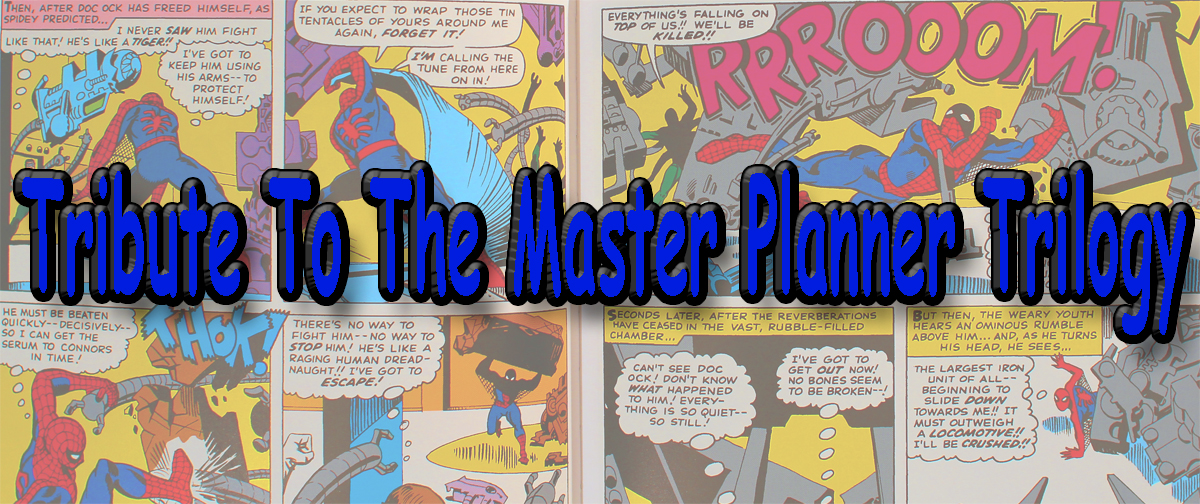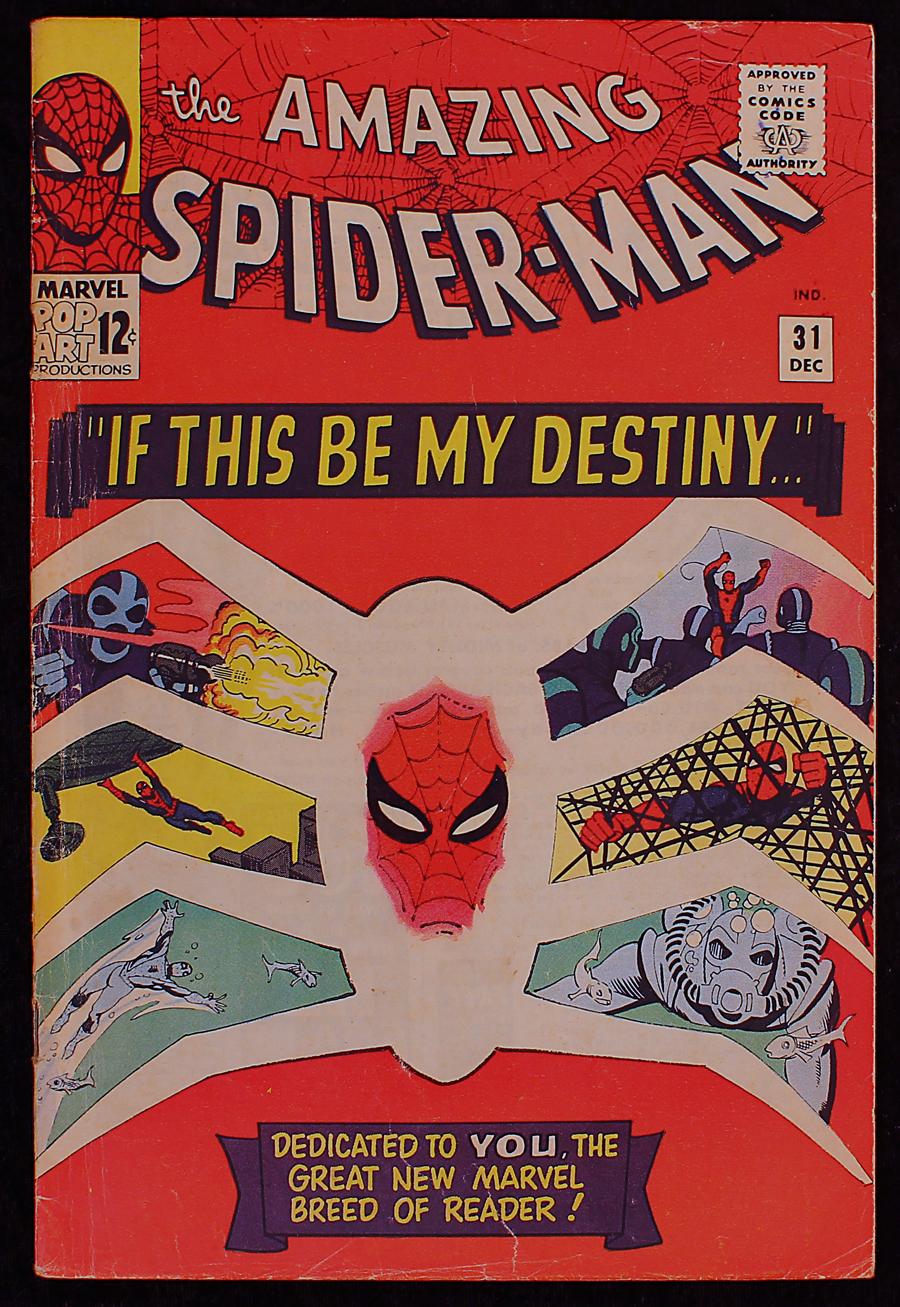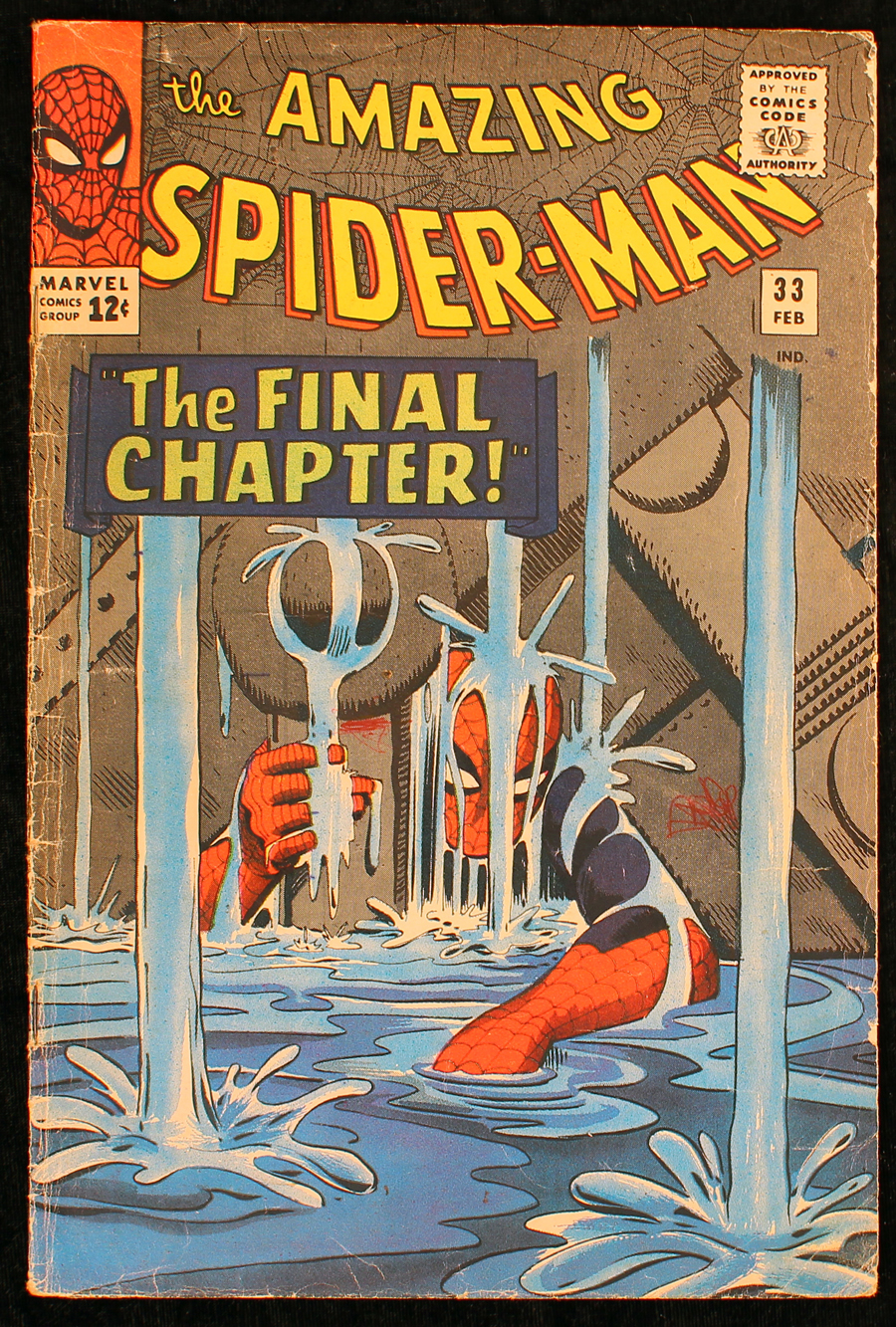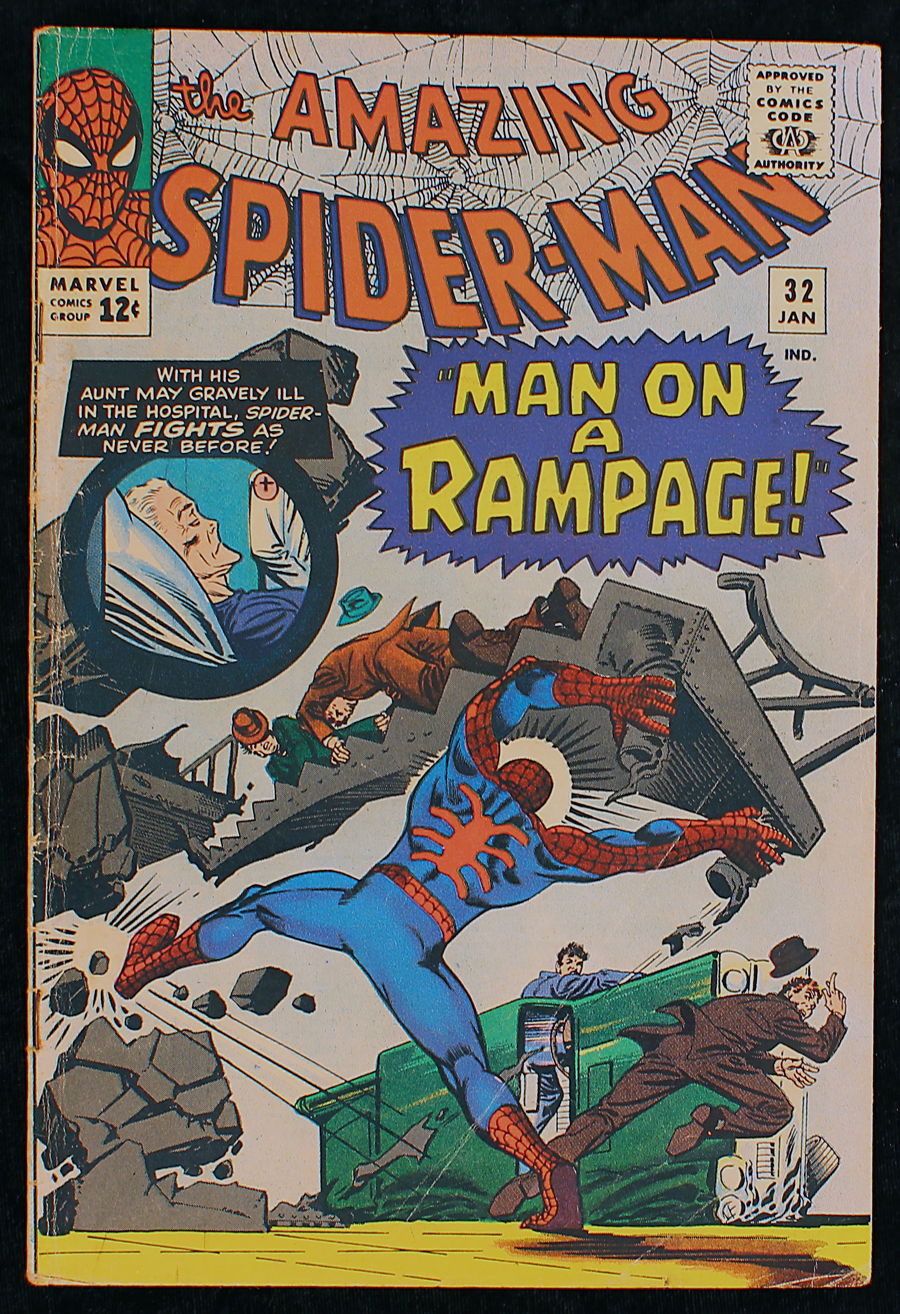More articles on comic books and popular culture at my Facebook Wall.

Click here to return to Comic Book Memories II homepage.
I've always been sentimental about the famous issues of The Amazing Spider-Man #31, #32 and #33 known as the Master Planner Trilogy. Not just because it was the greatest comic book story I've ever read but partly because it was the tipping point that made me a confirmed Marvel fan for the rest of my life. And I'm grateful for that. Somewhere there might be an alternate universe with a Lewis Forro who never got hooked on Marvel comics and lived a perfectly normal life. I pity that poor schmuck. I'm glad I'm the Lewis Forro in this universe who loves Marvel comics.
|
|
| Amazing Spider-Man #31, 1965 |
|
| First book in the Master Planner Trilogy. First appearance of Gwen Stacy, Harry Osborn, Professor Warren. |
|
Oh, I knew who Spider-Man was long before the Trilogy. I can remember sitting at the dining room table one night in 1964 reading my first Spidey comic book, #19. I probably bought it a Mr. Woo's 7-11store like the rest of the comics I bought in the early 1960s. I distinctly remember thinking while I was reading it something like "the fight scenes in this book are amazing. Sure beats the fight scenes in DC comics." I had never heard of Steve Ditko before but his quirky, unique art style started right then and there to worm its way into my imagination and I've been in thrall to Ditko ever since. I haphazardly picked up my next Spider-Man comics bought new, #21 (good battle scenes again, this time with the Human Torch and the Beetle) and #23 (more good battle scenes, this time with the Green Goblin). #28 was a tough choice to make. I remember having to choose between this one and an issue of another comic I liked at the time DC's Our Army At War with Sgt. Rock.12 cents was a lot of money in those days and could only buy one comic book. I think the #28's spooky black cover made the sale. I remember wondering about the cover to #30 where Spidey was drawn so small on the cover. The main star of a comic was usually shown as dominating the cover, but then of course Ditko frequently broke the rules and did things his own way. Spidey first battles some of the mysterious Master Planner's men in this issue as a prelude to the fireworks in the next three issues. Ditko was taking his time, building his story one step at a time.
|
|
| Amazing Spider-Man #33, 1965 |
|
|
|
|
|
| Amazing Spider-Man #32, 1965 |
|
| A well loved and read copy. The best Ditko Spider-Man comic ever done, until... |
|
I was really getting hooked on Spidey by then because when I bought #31 that was the first time I had bought two consecutive issues of Spider-Man. #31 sank the hook a little deeper. We see Peter Parker starting at college, two new characters Gwen Stacy and Harry Osborn, Spidey battling the Master Planner's men again and Peter worrying more and more about his Aunt May being admitted to the hospital. I don't recall but I'm sure I must have made a mental note to start looking next month for #32 at Mr. Woo's 7-11. I don't actually remember buying the #32 now but I was delighted and astounded when I read it. There was that dynamite cover of Spidey terrorizing criminals and ripping out a staircase with the Ditko quirk of showing Spidey from behind instead of the usual procedure of showing the hero from the front. Ditko wasn't a big fan of routine procedures. I can remember sitting on our sofa in the living room that night devouring the story. We learn that Spidey's old enemy Doctor Octopus is the Master Planner. Peter learns that it's his own radioactive blood that gave Aunt May her life threatening illness. We get to see Dr. Connors (aka the Lizard) helping Spider-Man find a cure. And best of all are the scenes with Spidey rampaging through the criminal underworld looking for leads to where the Master Planner is hiding and fighting Doctor Octopus in his underwater hideout. In their previous battles Doc Ock had never shown any fear of Spider-Man but this time Spidey's ferocity scared him so bad Doc turned and ran. I had never read a comic book story with that type of dramatic, emotional power. Even for Marvel which was known for its melodrama it stood out as unique. I knew it was going to be a long month to wait to see how Spidey was going to escape that heavy metal wreckage that had him trapped in Doc Ock's headquarters in the last panels of the story.
So there I was a few weeks later at Mr. Woo's 7-11 standing near the check out counter when I glanced over to the comic book spinner rack. Near the bottom of the rack was the latest Spider-Man issue. That cover of #33 with Spidey hopelessly trapped under the machinery with water pouring in from above told me all I needed to know. Mr. Woo was .12 richer a few second later.
Like thousands of other Baby Boomers who were reading #33 that month I was absorbed by those first few pages where Spider-Man is struggling to lift the titanic machinery off him before the roof caves in and drowns him. His motivation to save his Aunt May to help make up for his failure to save his Uncle Ben seemed entirely logical and human. But even after that exhilarating moment of triumph when Spidey throws off the weight and frees himself, the reader can't relax. Immediately the roof caves in and Spidey has to twist and turn through a torrent of water to get back to the surface level of Doc Ock's hideout. And he still isn't in the clear! Although totally exhausted, his has to fight his way through a group of Doc Ock's men. And then finally the touching climax when Peter learns that all his efforts weren't in vain and that he saved his Aunt May.
Marvel had many wonderful extended stories in that wonderful 1960s Silver Age but for my money the Master Planner Trilogy is the most satisfying. The Galactus Trilogy had a more cosmic grandiose scale with God imagery and Biblical themes. The Skrull-Kree War epic from The Avengers was longer, more complex and intricately plotted. But I don't think any other Marvel story equals the Master Planner Trilogy for pure dramatic narrative. It grabs your attention and emotions and doesn't let go. It hasn't let go of me in all these years and I'm sure it never will. It's calling for me now and easily accessible in my The Amazing Spider-Man Omnibus resting in my book cabinet. When the time is right, I'll answer the call and read it yet again. I'll be 11 years old again back in 1965 and there's not much in this life better than that.




